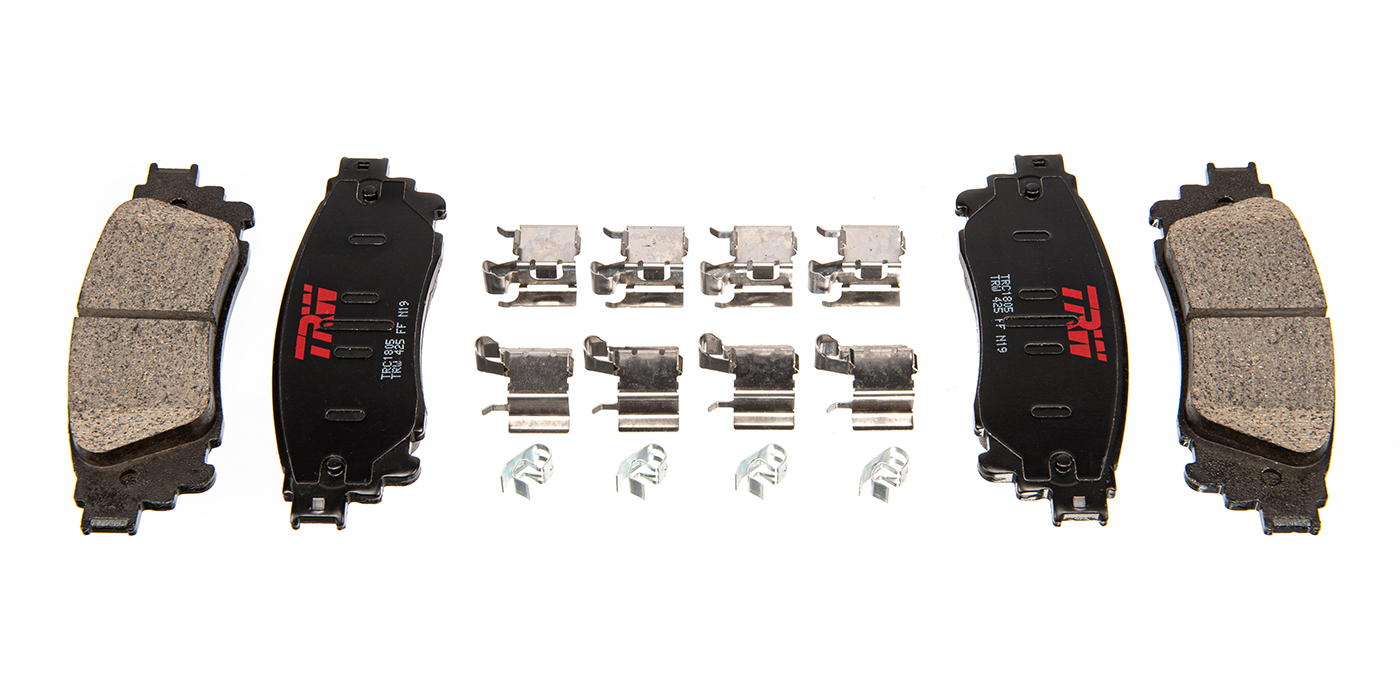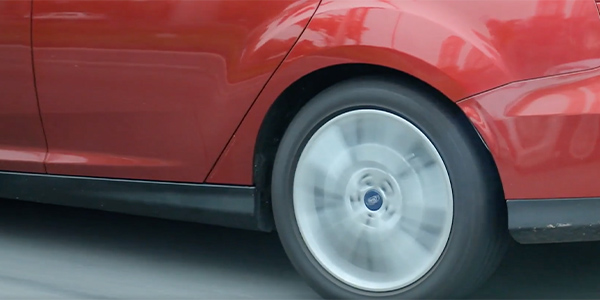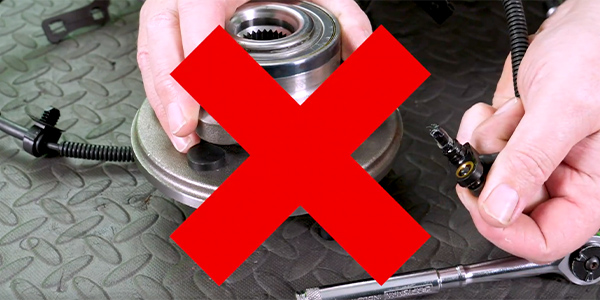Validating that the vehicle brake system is capable of getting the vehicle down a mountain is one of the major tests that occurs during the development and “prove-out” of the vehicle. In most cases, the manufacturer or the brake system supplier will test the vehicle on the road. This is also where a lot of new vehicle pictures are taken.
There are several favorite mountains that are commonly used. These include Pike’s Peak near Colorado Springs, areas near Mt. Palomar in Southern California and several grades in the area surrounding Death Valley National Park. In Europe a region known as Gross Gloeckner in the Alps is commonly used. All of these test sites are generally similar.
As a brake system engineer, you must get the vehicle down from the top of the mountain in a safe and controlled manner. Also, they must avoid the cameras of photographers looking for the newest prototypes. A vehicle at the top of the hill also has energy, even when it’s not moving.
Just push a vehicle at the top of the hill and you don’t want to be in front of it at the bottom. You burned calories of energy to push the car up the hill. It was converted to potential energy for the car at the top of the hill. That energy then converted to kinetic energy (speed) at the bottom. Mathematically, potential energy is defined according to the equation:
As an example, a SUV weighing in at 6,400 lbs. rolls from the top of Mt. Washington in California to the beach in LA. It has 120,000 BTUs of energy that the brakes must absorb during the trip down the hill. Ignoring drag and friction, if all the potential energy of the vehicle at the top of the mountain was converted to speed, that SUV would hit the shoreline in excess of 900 mph.
The brakes are responsible for retarding the vehicle going down the hill. They convert the potential energy to heat. The brake system must be designed to operate at elevated temperatures to insure a safe trip down.
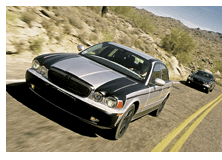 Favorite Hills
Favorite Hills
One of the most common routes for brake validation is a place commonly known as Townes Pass. This is a section of road bordering Death Valley National Park.
The pass descends from the top of Towne’s Pass down to the point in Death Valley known as Stove Pipe Wells. The route is approximately 25 miles and the descent is a little more than 5,000 ft.
The test plan used varies from manufacturer to manufacturer, but all are similar. The vehicle is loaded to its gross vehicle weight and, in many cases, pulls a trailer at the rated limit specified by the manufacturer. This is generally in the range of 1,500- 2,500 lbs. This is the limit above which separate trailer brakes are specified.
The vehicle is completely instrumented with thermocouples at all critical locations to measure the temperature of specific components. Key temperatures include the rotor, pads, caliper in the area of rubber components, and brake fluid in the caliper. Ball joints, bearings, wheel speed sensors and brake hoses are also studied.
The test is generally conducted in late July or early August to insure maximum ambient temperatures. This insures the vehicle will experience the least amount of cooling due to thermal differences.
In my personal experience, I have tested as high as 129 º F and it is commonly above 115 º F. The vehicle is driven down the mountain and must maintain the posted speed limit. This speed generally ranges from 35-50 mph. The brakes are used as necessary to maintain this speed within 10 mph.
In some cases, the test driver “snubs” the brakes. This is a technique where the vehicle is allowed to coast up to the speed and then is decelerated at a rate of 0.10 g — 0.20 g (light deceleration) down to 10 mph below the target. This pattern continues all the way down the mountain. The brakes heat up substantially during the descent.
At the bottom of the hill there is a short stretch of flat road. The vehicle is accelerated to the posted speed of approximately 60 mph and a single stop at maximum capable deceleration is made. This stop is to confirm the stopping capability of the brake system at the bottom of the mountain. The vehicle is then parked. This generally occurs in the parking lot of the general store.
The test engineer and every tourist passing through stop here to take a break, get some cool drinks (water) and an ice cream. This portion of the test is a critical piece of the evaluation. While the vehicle is coming down the hill, the rotor is absorbing the bulk of the heat.
Other surrounding components absorb heat as well. The rotor temperature can exceed 1,000 º F. When the car is parked, the rotor gives off its heat to the surrounding environment. While the rotor is cooling down, everything else is heating up during this soak period. One of the most critical things heating up during this period is the brake fluid.
The brake fluid can not reach its boiling temperature during this soak. Remember, the driver has just made the big trip down. He has 100 miles of the flattest road around and is not thinking about his brakes anymore. This test is to insure that the driver doesn’t discover his brake fluid is now a compressible brake gas at the next intersection several miles down the road.
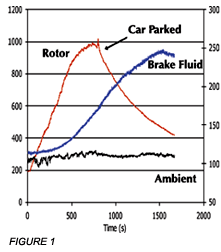 A pedal-to-the-floor scenario could occur. The driver would claim he hadn’t touched the brakes in 10 miles and had no brakes at the intersection.
A pedal-to-the-floor scenario could occur. The driver would claim he hadn’t touched the brakes in 10 miles and had no brakes at the intersection.
The chart in figure 1 shows the actual temperature trace for a vehicle. Note that the fluid temperature peaks substantially after the rotor has peaked and does not peak until many minutes after the descent is complete.
This is true for many of the surrounding components. The chart shown represents a typical temperature plot of a vehicle descending Townes Pass.
Note the difference between rotor temperature and fluid temperature and the delay between when the two peak. The fluid peaks long after the vehicle has gotten to the bottom of the hill.
Fluid Selection
Regarding the brake fluid, the typed used in North America is generally either DOT 3 or DOT 4 rated. These are Glycol-based fluids. Their boiling point is dependent of how much water they have absorbed. This can reduce the boiling point substantially. A typical DOT 3 fluid may have a boiling point in the range of 500º F in a dry new state and drop down as much as 250º F when saturated. Most fluids tend to saturate with water at about 6% water content. The brake engineer will use the saturated condition to assess vulnerability to fluid boil.
For technicians preparing customer vehicles for cross country trips or people preparing to pull the boat or travel trailer, a flush and change of the brake fluid can provide an even greater safety margin. At a minimum, the vehicle manufacturers recommended replacement schedule should be followed. For vehicles operating in mountainous regions, a change of fluid yearly is a good practice. The use of commercially available test strips can also give an indication of the condition of the fluid.
Pad Material Selection
There are numerous design considerations to protect the brake system, and ultimately the driver, from these extreme temperatures. Material selection, airflow and rotor sizing are critical factors. These two design features can have a sizeable impact on fluid temperatures and should be monitored by the technician.
The thermal conductivity of the friction material can influence how much of the rotor heat is transmitted to the caliper housing and ultimately the fluid.
A pad material with a high metallic content will transmit heat much more effectively than high organic pads. The caliper piston material is also similar. Steel pistons will generally generate higher fluid temperatures than phenolic pistons. The mountain decent test is a key area that is evaluated relative to these design choices.
Overall, the mountain descent performance of a brake system is a very key part of the overall design consideration.










